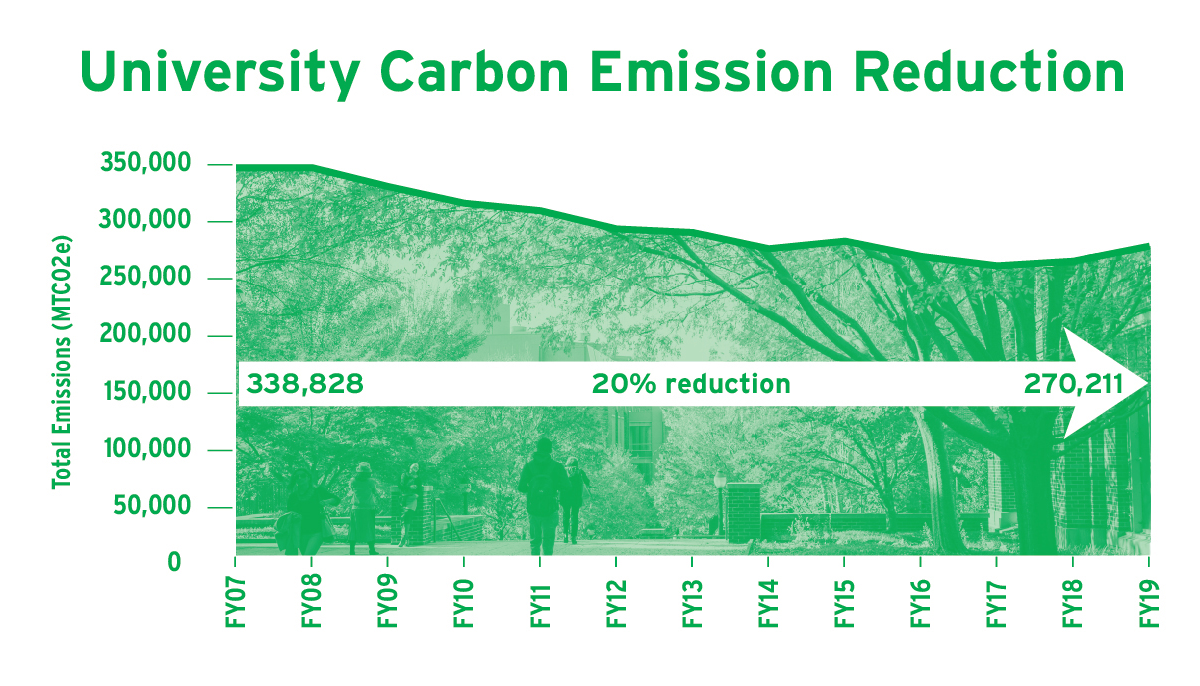
Emissions
Goal: Aggressively pursue carbon neutrality in 2024 and beyond through a combination of direct emissions reduction strategies and carbon offsets.
Duke University is on track to meet its carbon neutrality commitment in 2024. As of June 30, 2019, the university has reduced emissions by 20%. Despite campus growth, emissions per gross square have been reduced by 36%. While emissions rose slightly from FY18, mainly due to factors within transportation, Duke expects to take big steps to reduce emissions in the next four years.
Duke was also awarded a Second Nature "Mark of Distinction for Climate Action Progress" in 2019. The University was recognized for setting an aggressive carbon neutrality goal, being on track towards that goal and participating in the larger "We Are Still In" movement in the U.S.

Carbon Offsets
As Duke continues to explore innovative, local offset investments, several new project areas have emerged. The Duke Carbon Offsets Initiative (DCOI) has partnered with the Duke Wetland Center and a large private landowner in N.C. to develop a 300-acre peatland restoration pilot project that could expand to 10,000 acres depending on project success.
As the client for a student masters project in the Nicholas School, the DCOI also supported the development of a GIS tool that will allow identification of key forested parcels in N.C. for avoided conversion offset projects that exhibit carbon sequestration potential and additional conservation benefits.
Though the DCOI places a priority on local, N.C.-based carbon offsets, it is seeking to create a diverse portfolio of offset credits that also includes those from international projects with a strong connection to the University. This year, in collaboration with Nicholas School of the Environment professor Dr. Liz Shapiro-Garza, DCOI supported 12 indigenous communities in Oaxaca, Mexico in their effort to improve the management of their forests through the sale of carbon offsets. This investment helps these communities maintain the integrity of their land and reinvest offset revenues into their community.